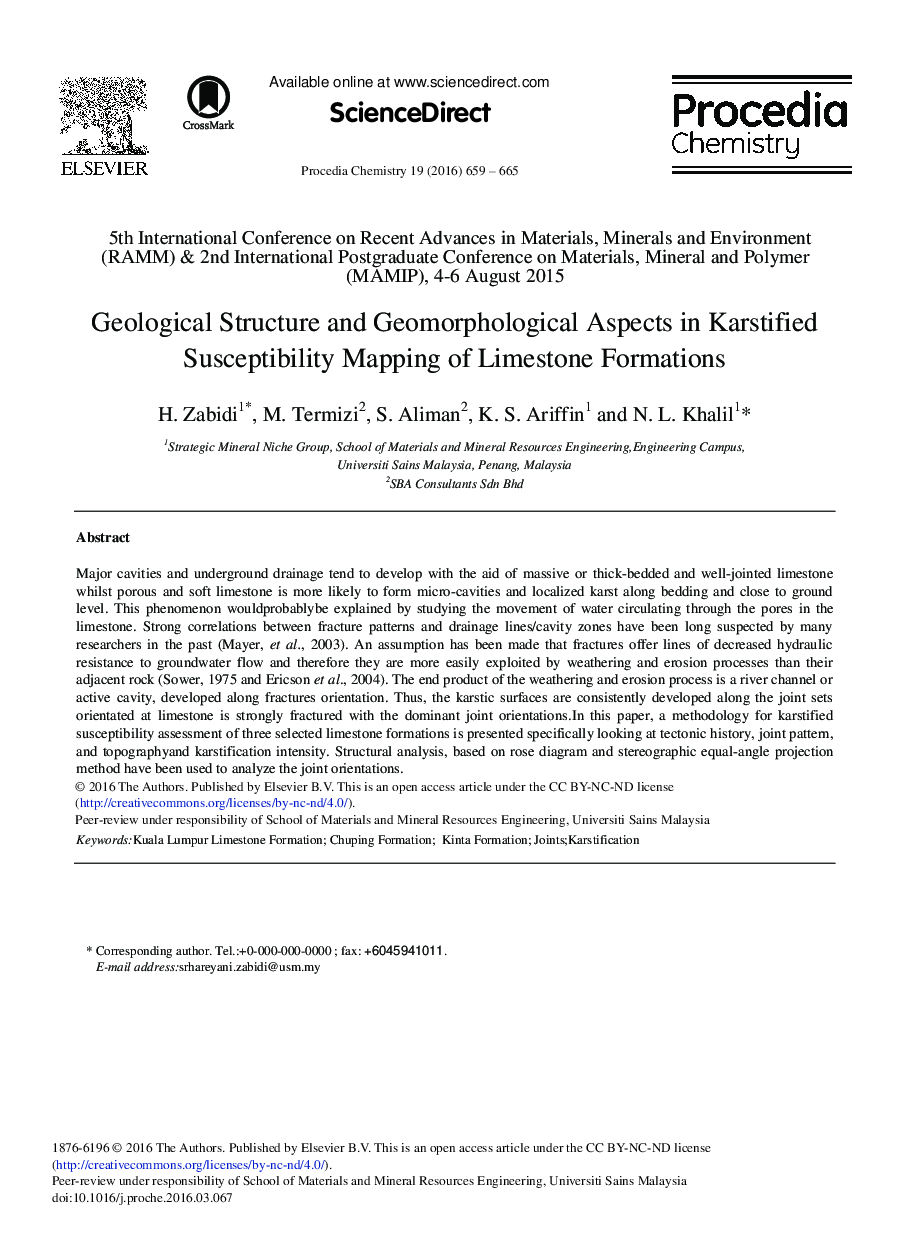| Article ID | Journal | Published Year | Pages | File Type |
|---|---|---|---|---|
| 239880 | Procedia Chemistry | 2016 | 7 Pages |
Major cavities and underground drainage tend to develop with the aid of massive or thick-bedded and well-jointed limestone whilst porous and soft limestone is more likely to form micro-cavities and localized karst along bedding and close to ground level. This phenomenon wouldprobably be explained by studying the movement of water circulating through the pores in the limestone. Strong correlations between fracture patterns and drainage lines/cavity zones have been long suspected by many researchers in the past (Mayer, et al., 2003). An assumption has been made that fractures offer lines of decreased hydraulic resistance to groundwater flow and therefore they are more easily exploited by weathering and erosion processes than their adjacent rock (Sower, 1975 and Ericson et al., 2004). The end product of the weathering and erosion process is a river channel or active cavity, developed along fractures orientation. Thus, the karstic surfaces are consistently developed along the joint sets orientated at limestone is strongly fractured with the dominant joint orientations. In this paper, a methodology for karstified susceptibility assessment of three selected limestone formations is presented specifically looking at tectonic history, joint pattern, and topographyand karstification intensity. Structural analysis, based on rose diagram and stereographic equal-angle projection method have been used to analyze the joint orientations.
